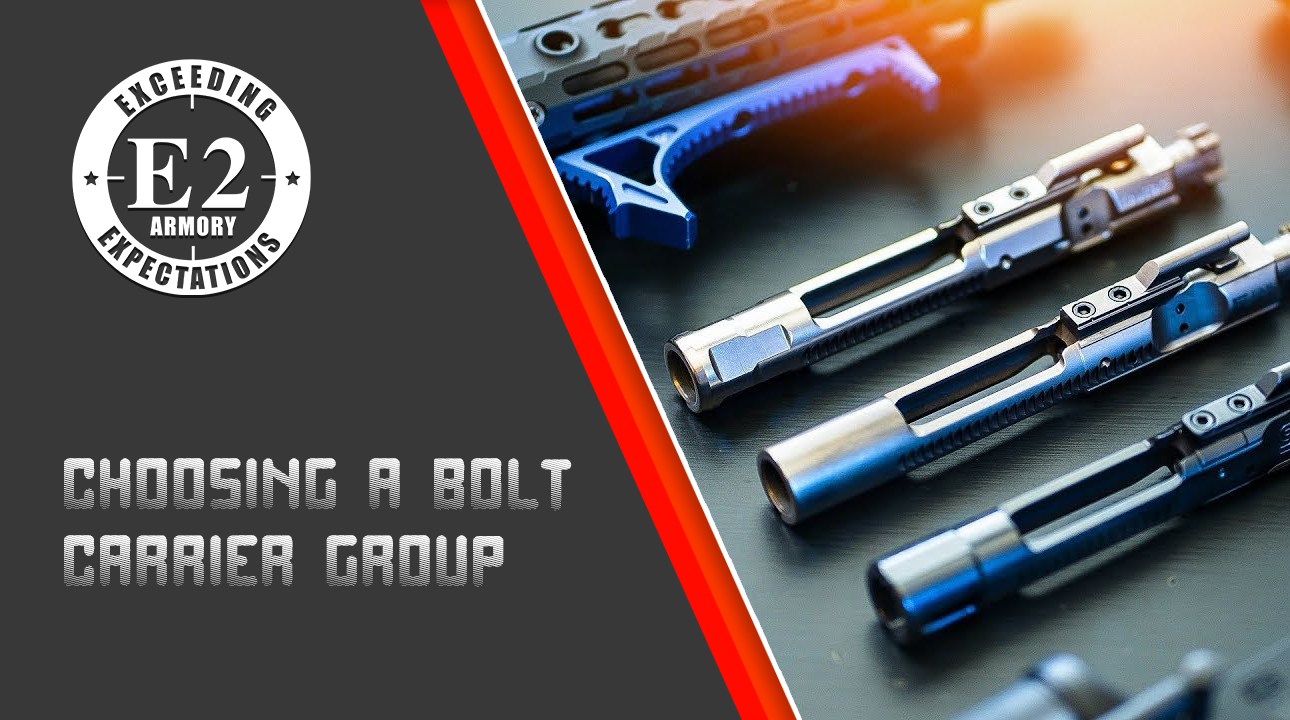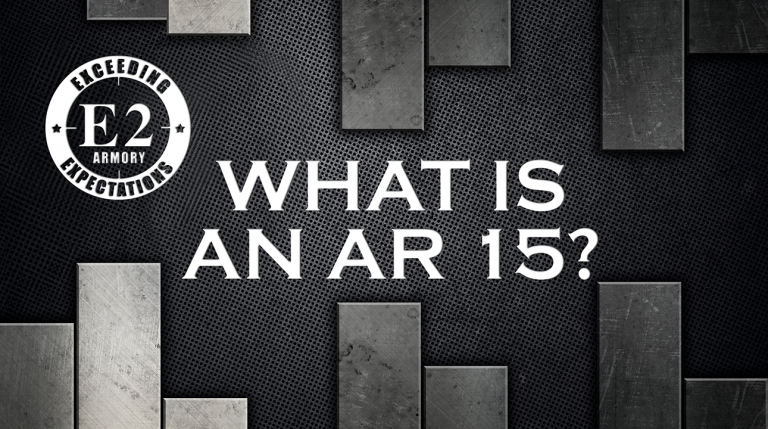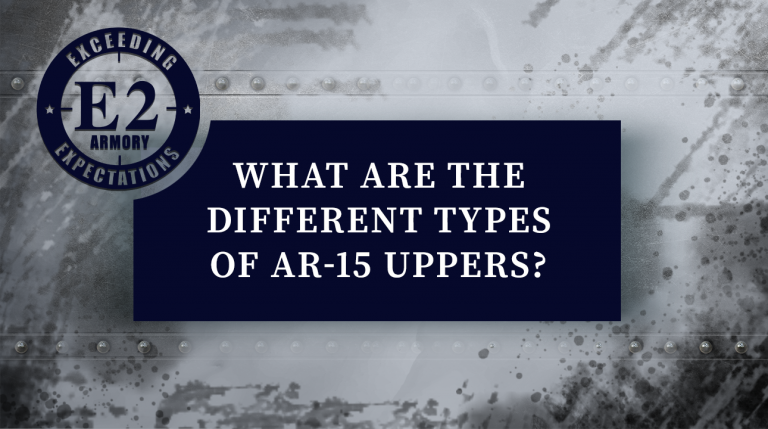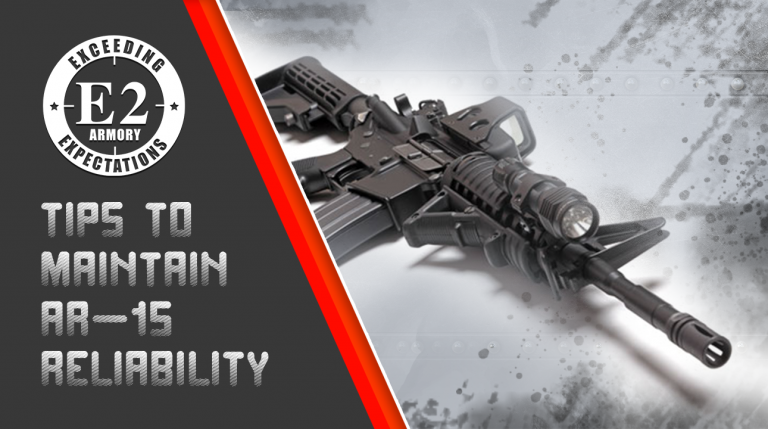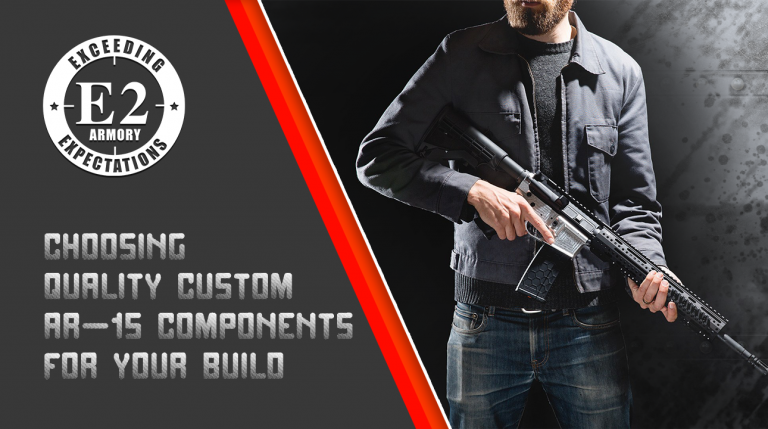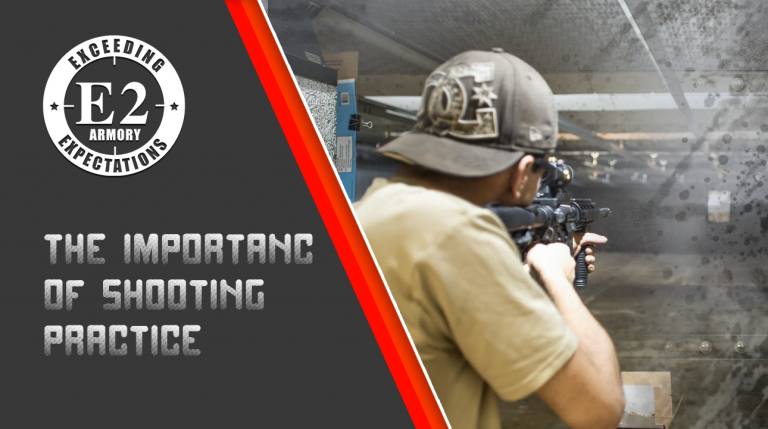Choosing Bolt Carrier Groups
The bolt carrier group is a very important part of the AR-15. It is the part that contains many if not most of the important components for firing, from the firing retaining pin to the bolt cam pin, gas key, bolt assembly, carrier, and firing pin.
A bolt carrier group is a complex piece of machinery. You may ask yourself how you can choose the best kind of BCG for your rifle. Hopefully, this article will help.
Purchasing Bolt Carrier Groups
There are differences between an AR-15 and M-16 bolt carrier group. The fully automatic M-16’s bolt carrier group has more material on the back, for starters, allowing compatibility with a fully automatic sear. This is the part of the gun that holds the hammer, strike or bolt. Because of this extra material, the M-16 BCG weighs quite a bit more than the AR-15 bolt carrier group, as well.
While each bolt carrier group has its advantages, many prefer the M-16 style, as the added weight can help the weapon cycle more effectively. Perhaps because of this benefit, the M-16 style BCG is more common.
Legal Matters
You may have concerns about the legality of the M-16 bolt carrier group. The good news is, you don’t have to. According to a statement by the Bureau of Alcohol, Tobacco, Firearms, and Explosives, “an M-16 bolt carrier group is simply a machine gun part and as such its domestic sale and possession is unregulated under the federal firearms laws. It is not unlawful to utilize an M-16 machine gun bolt carrier in a semiautomatic AR-15 type rifle.”
Testing
During the use of your weapon, powerful forces are exerted on the bolt. Because of these powerful forces, it is important that no weaknesses exist in the metal. In order to ensure that, the makers of your AR15 BCG put their products through a battery of tests. These tests include magnetic particle inspection and high-pressure testing. Magnetic particle inspection ensures that there are no breaks or cracks in the metal the bolt carrier is made of.
You can tell if your bolt has been tested by checking whether the manufacturer has marked it. The carriers and gas keys are chrome-lined according to military specifications. This ensures that the part is easier to clean and functions more reliably when dirty. The chrome lining is applied to the inside of the bolt carrier group, not the outside.
A Closer Look
A big difference between bolt carrier groups is that some use Carpenter 158 steel while others use 9310 steel. There is some debate around which steel is best, but both work. Another difference is that many manufacturers shot peen their bolts, making the metal more resistant to cracks. During shot peening, tiny spheres known as shot are blasted at the bolt itself. The shot acts as a peening hammer that relieves stress in the metal.
The gas tube is attached to the BCG through two small screws. Over time, pressure blasting through the gas tube can loosen these screws, but there is a way to prevent this. Manufacturers should stake the screw heads, which ensures that they can no longer be moved.
For any number of reasons, you may wish to invest in a more lightweight bolt carrier group. Lightweight BCGs can be up to eighty ounces lighter than the standard kind. However, these BCGs require adjustable gas systems to properly regulate the flow of gas to the bolt carrier group. This can be done with an adjustable gas block.
There are several options when it comes to AR15 BCG coatings. These include manganese phosphate, chrome, nitride, electroless nickel, and vapor deposition.
Manganese Phosphate
Manganese phosphate is the most common BCG’s coating. Its benefits are that it’s economical, durable, and corrosion-resistant but, due to its highly porous nature, it is also difficult to clean.
Chrome
Unlike manganese phosphate, chrome is both harder and more porous, both of which make it easier to clean. Unfortunately, it is expensive and brittle.
Nitride
Nitride is not technically a coating, but a chemical treatment that results in a hardened black surface. It is durable and highly corrosion resistant. However, if it is not done properly, it can have a negative effect on the sensitive part of the bolt carrier group.
Electroless Nickel
Electroless nickel results in a thin surface layer that is harder than the underlying metal. It has excellent lubrication properties. While easy to clean and less reliant on lubrication, however, the coating can wear off over time.
Vapor Deposition
Vapor deposition is thin, extremely hard, and slippery, reducing the need for cleaning and lubricant. However, it is more expensive than other coatings.
Choosing A Bolt Carrier Group
Hopefully, with the help of today’s article from E2 Armory, you’ve got everything you need to choose a BCG for yourself. Visit us, today, to find out more about our selection of bolt carrier groups, and get the components you need at an unbeatable price.
Related Tag: ar 15 bolt carrier group


